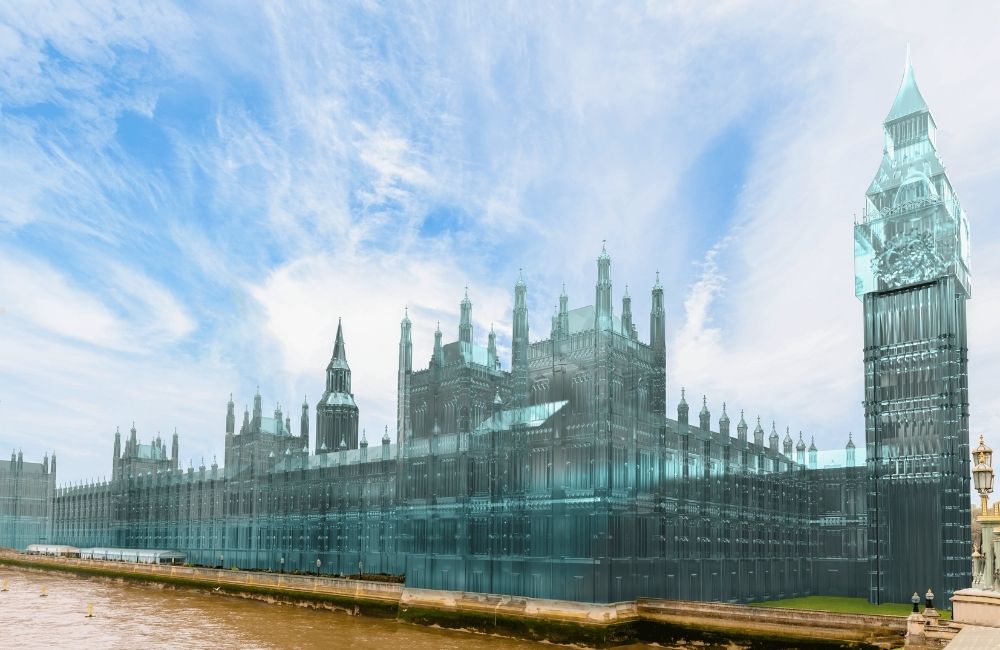Glass has become one of the most reliable building materials due to its many applications and low costs. So, whilst we admire some of the most famous buildings in the UK, what if things were a little different?
What would we see if the House of Parliament was entirely made of glass? How would Holyrood Palace appear if it was transformed in the 21st-century? And what if James of Saint George didn’t get his creative hands on Conwy Castle?
Innovation is visible in almost every sector, and architecture is no different. By carefully considering the design and capabilities, we have reimagined five iconic landmarks across the UK and described the benefits of using glass in future architecture and design.
House of Parliament
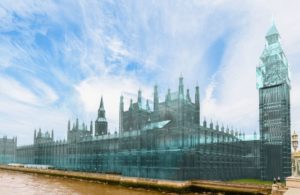
With the UK Terrorism threat level labelled as substantial, The Houses of Parliament, built in 1097 under William II (Rufus), the son of William the Conqueror, could be a prime target for a terrorist attack.
The use of SGP interlayer and toughened glass in the design of The House of Parliament would withstand bomb blast performance requirements and provide greater security from severe weather and durability in elevated temperatures; an essential feature to protect this UK landmark against the environmental changes due to climate change.
With many confidential conversations taking place, acoustic and white diffuser glass would also need to be heavily integrated into the architectural design to minimise sound and ensure privacy within meeting rooms, and more importantly, the high court.
Palace of Holyroodhouse
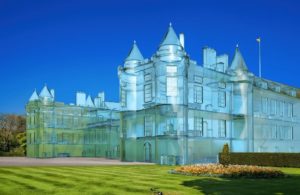
Designed by Sir William Bruce and also known as Holyrood Palace or Holyroodhouse, the Palace of Holyroodhouse is the official home of the British monarch in Scotland. Every year, Queen Elizabeth II spends one week in residence here at the beginning of each summer.
The construction of Holyrood Palace dates back to 1671, so it is very traditional, however, if redesigned from glass or with the use of glass features, this would help bring it into the modern-day.
With July temperatures averaging a daily high of 21 degrees Celsius in the UK, room temperatures can get stuffy and uncomfortable, especially if in direct sunlight. By implementing energy-efficient coated glass into the design, you can help keep interiors cool in the hotter months without opening windows or installing air conditioning.
Using energy-efficient glass would also mean more natural light and less artificial light, which is better for your health, eyesight and can even reduce stress.
Leeds Corn Exchange
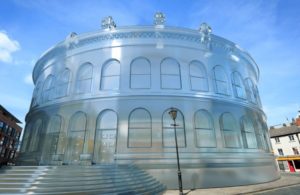
Built between 1861 and 1863 by Cuthbert Brodrick, Leeds Corn Exchange is now a boutique shopping centre for independent retailers.
Retail business owners must attract foot traffic, especially those without digital platforms, as more retail companies sell goods online day by day. Store frontage is integral to keeping retail businesses competitive and current, showcasing what’s inside and, more importantly, who is inside.
Leeds Corn Exchange would benefit from the use of curved ‘Clearsight’ glass. This type of glass would ensure a clear view and no reflection thanks to its anti-reflective coating, minimising glare and significantly reducing any light reflection to less than 1%. Compared to the 8% on conventional glass, this is a massive difference; any passer-by would see any display items thanks to a crystal clear window.
At Specialist Glass Products, we can bend and curve glass up to 3200mm x 5000mm, so the Leeds Corn Exchange could be entirely built from toughened curved glass (and steel of course!).
Cathedral of Dublin
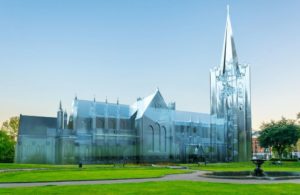
Christ Church Cathedral was founded way back in 1030 by Sitric, King of the Dublin Norsemen!
Renowned for its beauty, architecture and exquisite floor tiles, the church could integrate energy-efficient glass to improve indoor comfort, save money on energy bills and reduce mould, leaks and condensation.
As well as keeping interiors cool, energy-efficient glass units can allow heat and light from the sun to pass through the glass, as well as reflect and contain heat from radiators or fires.
The use of toughened glass will also provide visitors with a higher sense of security.
Conwy Castle
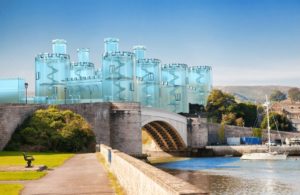
Built by Edward I, during his conquest of Wales, between 1283 and 1289, Conwy Castle was part of a wider project to create the walled town of Conwy.
As mentioned above, SGP can curve and bend extremely large panels of glass, which could easily be used to recreate the great towers of Conwy Castle. Not only could the walls be made of glass, but the internal spiral staircases as well. Unlike conventional wooden staircases, the sturdy, toughened glass used to create a glass staircase provides extended durability and a beautiful contemporary look.
Don’t forget, if the castle were built from glass, there would be fantastic views of Snowdonia, the harbour and the narrow streets of Conwy from every corner!
Why choose glass?
Whilst we have only imagined what famous UK landmarks could potentially look like, glass can be used in the construction of almost every home, office, and public building worldwide.
Due to its functional and decorative qualities, the advantages of using glass do not end at the aesthetics. Allowing natural light to spread through, the multifunctional material saves money and energy resources, keeping homes and workplaces warm in the winter yet cool in the summer, therefore, saving energy on heating and air-conditioning.
Structural glass can be used for anything, from commercial glass flooring, glass balustrading and glass canopies to glass walkways and glass staircases – the list is endless.
It is also 100% recyclable, so if it is ever removed or replaced, it can be broken down and transformed into a new product. So, if you value energy efficiency, sustainability, and security, glass is the material for you.
Whether you’re looking for double glazed, toughened, laminated or curved glass, contact our friendly professionals today.
Concept art by Sam Ball, final year graphic design student at The University of Huddersfield.


